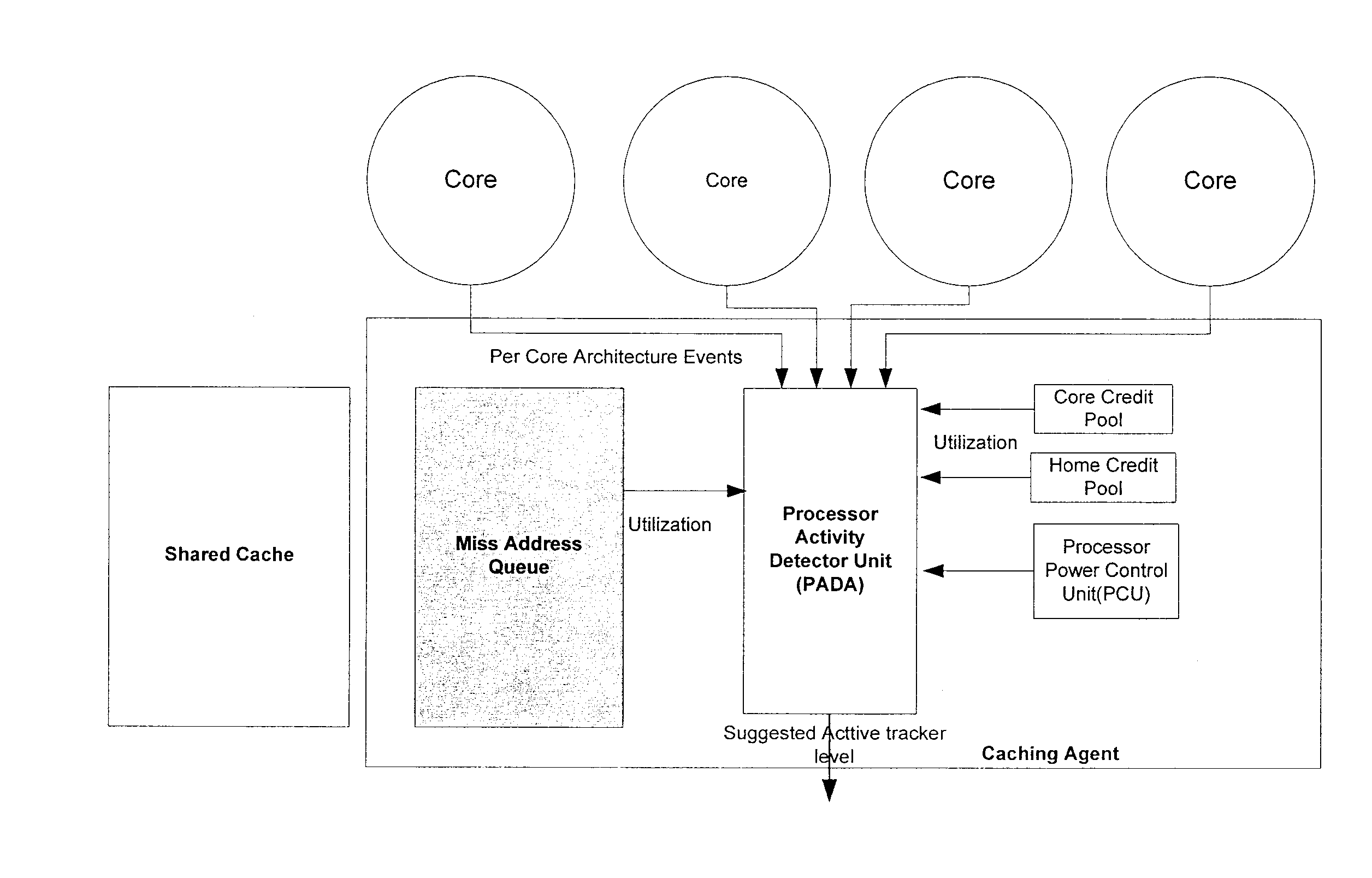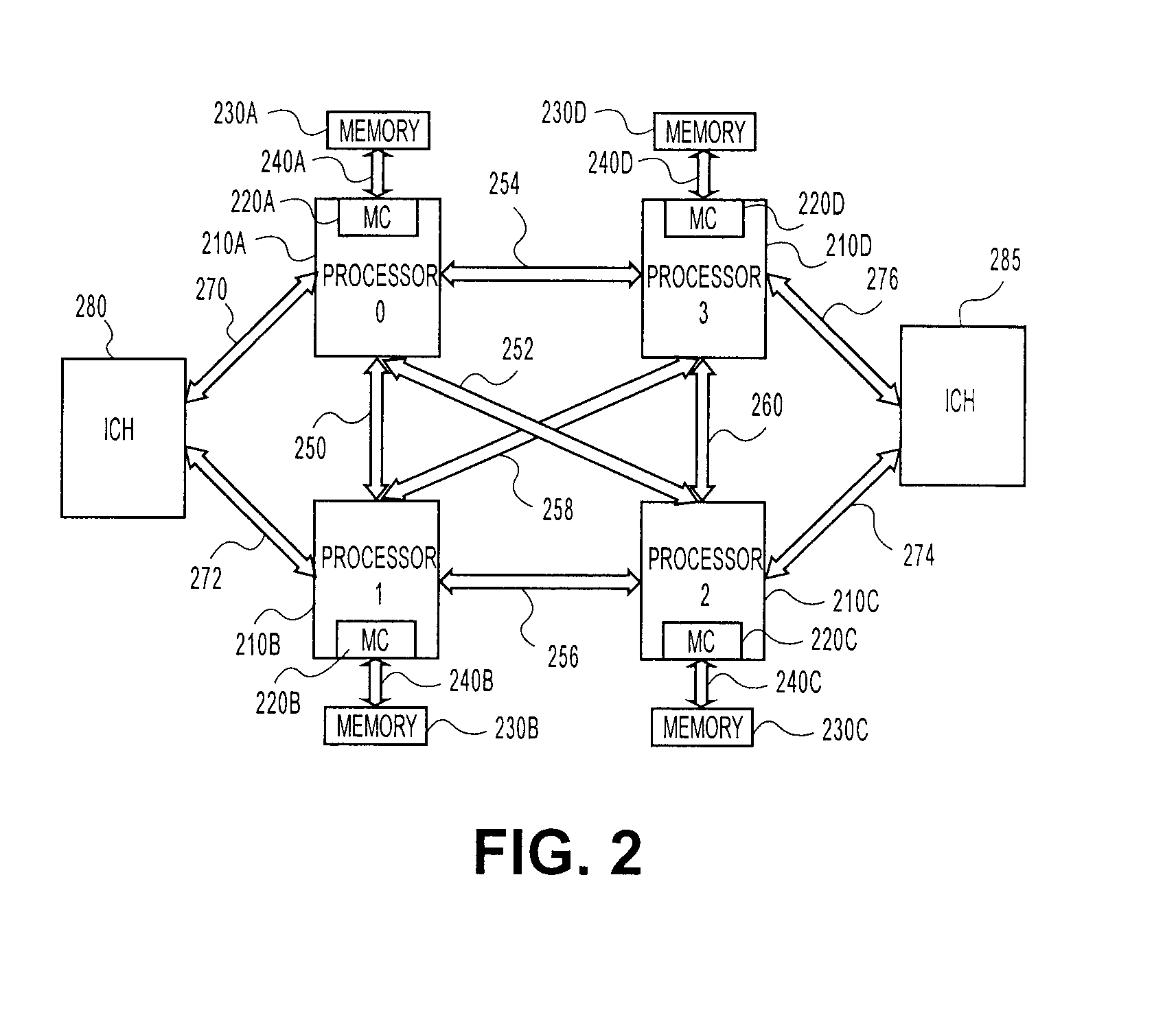Method, system, and apparatus for a core activity detector to facilitate dynamic power management in a distributed system
a distributed system and core activity detector technology, applied in power management, high-level techniques, instruments, etc., can solve the problems that conventional activity detector circuitry cannot effectively hide the latency of turning on/off the unit, and the ptp architecture will likely experience power management difficulties
- Summary
- Abstract
- Description
- Claims
- Application Information
AI Technical Summary
Problems solved by technology
Method used
Image
Examples
Embodiment Construction
[0014]The present application is related to and may incorporate embodiments from two previously filed applications. Both of the previously filed applications were filed on Jun. 29, 2006 by the same set of inventors. The first application, attorney docket P23215, is titled “Method and Apparatus for Dynamically Controlling Power Management in a Distributed System”, Ser. No. 11 / 479,438. The second application, attorney docket P24042, is titled “Method and Apparatus to Dynamically Adjust Resource Power Usage in a Distributed System”, Ser. No. 11 / 479,009.
[0015]FIG. 1 is a block diagram of a dual processor system of one embodiment of the invention. Such a dual processor (DP) embodiment and may occur in a variety of possible platforms. For example, this embodiment may be implemented as a desk top or mobile computer, a server, a set top box, a personal digital assistant (PDA), an alphanumeric pager, cellular telephone, or any other type of wireless communication device.
[0016]In this embodim...
PUM
 Login to View More
Login to View More Abstract
Description
Claims
Application Information
 Login to View More
Login to View More - R&D
- Intellectual Property
- Life Sciences
- Materials
- Tech Scout
- Unparalleled Data Quality
- Higher Quality Content
- 60% Fewer Hallucinations
Browse by: Latest US Patents, China's latest patents, Technical Efficacy Thesaurus, Application Domain, Technology Topic, Popular Technical Reports.
© 2025 PatSnap. All rights reserved.Legal|Privacy policy|Modern Slavery Act Transparency Statement|Sitemap|About US| Contact US: help@patsnap.com



